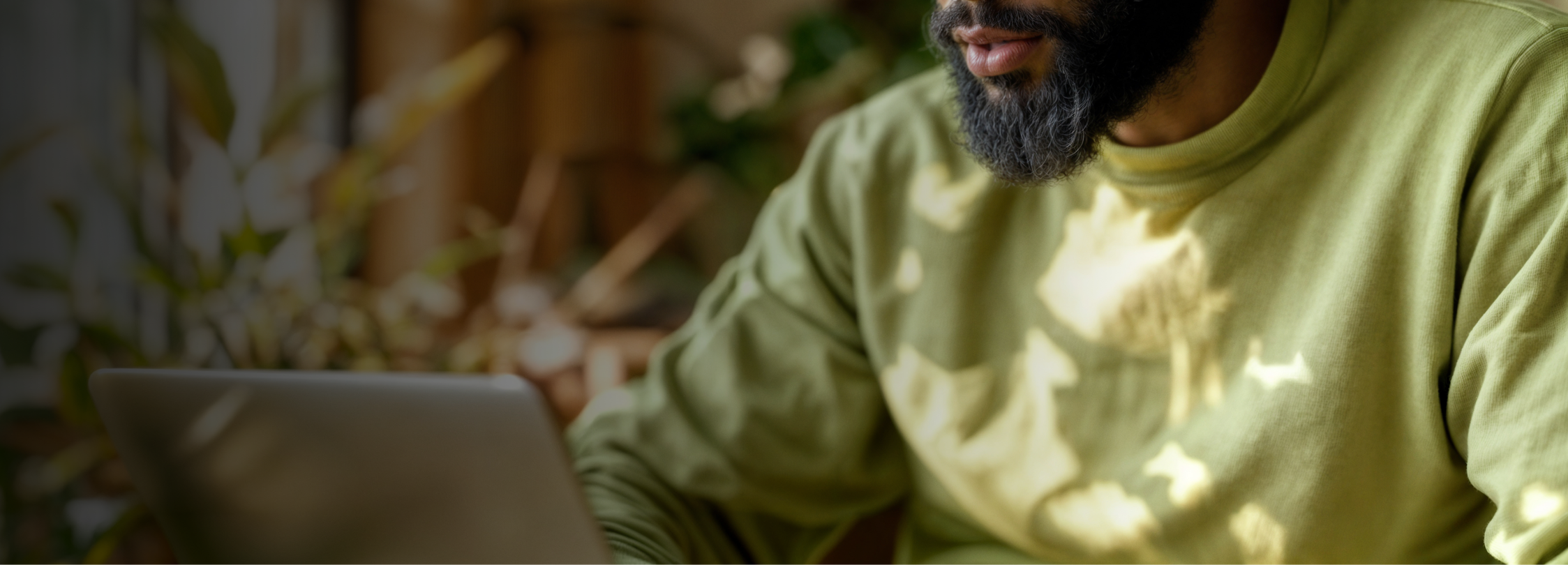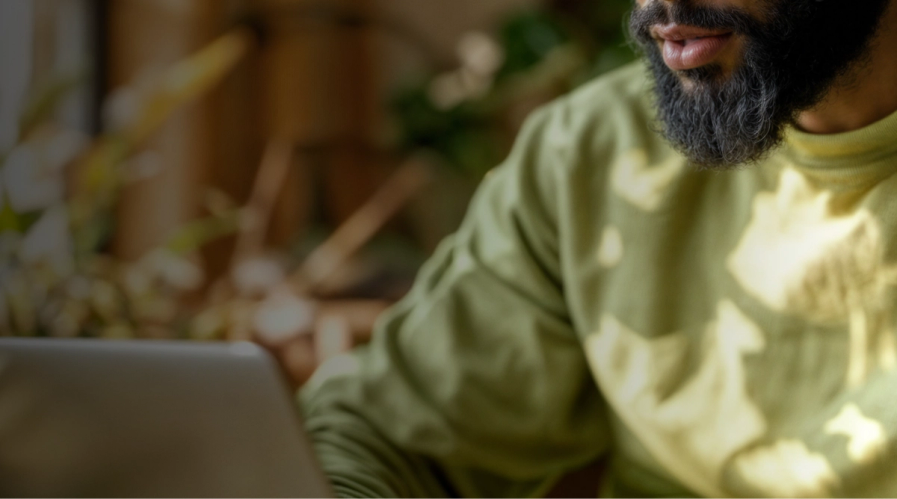
Measuring the ROI of Design and Your Design Partner
Published 13 Dec, 2023
Not sure if you’re getting the best value from your design partner? Learn how to measure the ROI of design partnerships through a combination of tracking KPIs, keeping a scorecard and following a simple formula. Fair warning: There’s some math involved. Don’t worry, the equation doesn’t come until the end.
It’s often said beauty is in the eye of the beholder. But when you’re putting your valuable budget and time into design projects, you still want to know if the work meets your goals.
When measuring effectiveness in business, the acronym ROI—return on investment—is inevitably top of mind. Even though that sounds super-businessy, measuring the ROI of design isn’t only possible, it’s essential to getting the most from your design partnership.
Putting an objective measurement on design might seem challenging, but it’s not impossible. In this post, we'll discuss the challenges of measuring the ROI of design, what you can use to evaluate design success and give you some formulas to help you understand how your design partner is performing.
Measuring the ROI of Design
While certain metrics, like ad performance, help you draw a straight line to the overall effectiveness of your marketing creative, other measures, like brand impact, are a bit more squiggly.
Digital campaigns provide quantitative data to measure ROI. Say you’re running a Google Ad campaign as an example. You can easily track conversion rates, click-through rates (CTRs) and the big one—customer acquisition cost (CAC). The numbers tell you what’s working and what’s not.
But what about branding work? These creative assets might not have hard stats like views and clicks, but there are still ways you can get qualitative data to help you understand how they're performing. You can look at traffic lift, use Google’s Brand Lift tool and survey customers. However, the line is still dotted and curvy.
Evaluating the ROI of Your Design Partner
Going one conceptual stack doll above the design itself, assessing the ROI of your overall outsourced design partnership can be broken down into two main components:
- Tracking and scoring key performance indicators (KPIs).
- Calculating ROI as a percentage of costs.
Together, these components can help you develop a tangible way to quantify your design partner relationship, which underscores your ability to produce outstanding, cost-effective creative.
Tracking KPIs
No one can escape acronyms, not even design agencies and partners. KPIs give you qualitative insights into the effectiveness of your overall relationship. Measuring these KPIs gives you a deeper understanding of your design partner’s performance and the value they bring to your business.
- Quality. Evaluates the overall essence of the design work produced by your design partner. It can include anything from creativity and originality to whether the assets are consistent and on brand.
- Efficiency. Did the design partner deliver what they said they would, when they said they would? If there were delays, were they addressed with process improvements?
- Communication. I could say this all day—good communication is the key to any successful relationship. This KPI measures the agency's communication responsiveness, clarity and effectiveness.
- Budget. In a perfect world, you’d hit the nail on the head every time with estimates and budgets. In the real world, ups and downs happen, but you want to ensure everything is always headed in the right direction. Regularly being in the red is a major red flag.
- Reliability. Trust is built on consistently delivering amazing work on time, on budget and within scope. Reliability measures your design partner’s steadfast ability to deliver these goods.
- Technical skills. To paraphrase Napoleon Dynamite, “Businesses like design partners with skills.” This KPI measures your design partner’s proficiency in the tools and technologies needed to bring your design requirements to life.
- Adaptability. This evaluates the agency's ability to adapt to changes and handle unexpected challenges. In the fast-paced world of design, flexibility is a valuable trait.
If some of these sound familiar, it’s because many of these KPIs are similar to the qualities used to evaluate potential design partners.
Creating a Design Partner Scorecard
Sharpen your pencils. It’s time to turn KPIs into actual numbers! A design partner scorecard helps you track and quantify KPIs. With the design partner scorecard, you score each KPI and then weight it to give you a total figure you can use to gauge the strength of your relationship.
Building a design partner scorecard
Using a simple table, list all the KPIs you want to measure on the left column. In the next column, assign each KPI a score from 1 to 10, where 1 indicates poor performance, and 10 represents maximum effectiveness (or awesomeness).
Weighing scores provides a further measure by letting you prioritize which KPIs matter the most in your design partner relationships. The higher the weight, the greater the significance. One very important point: All of your decimal value weights must add up to one.
To calculate the weighted score, you multiply the KPI score by the weight: KPI score X weight = weighted score. In turn, your total score is the sum of all your weighted scores.
An example of a design partner scorecard
This example shows you how the design partner scorecard works and comes together when you fill in all the blanks.
| KPI Score (1–10) | Weight | Weighted Score | |
|---|---|---|---|
| Quality | 7 | 0.20 | 1.40 |
| Efficiency | 5 | 0.15 | 0.75 |
| Communication | 6 | 0.15 | 0.90 |
| Budget | 6 | 0.10 | 0.60 |
| Reliability | 5 | 0.15 | 0.75 |
| Technical skills | 7 | 0.10 | 0.70 |
| Adaptability | 5 | 0.15 | 0.70 |
| Total | 1.00 | 5.80 |
This hypothetical design partner scores average to above average on every KPI, with the highest scores in quality, communication and technical skills. The total weighted score is 5.8 out of 10—way to go hypothetical design partner!
Calculating Design Partner ROI as a Percentage of Cost
Building on quantifying design partner KPIs, you can also calculate design partner ROI as a percentage of the overall cost of their services. Here’s how the formula works:
Step 1. Double the service cost to get the maximum potential value (MPV)
In this example, the service cost is $3,500.
$3,500 service cost X 2 = $7,000 MPV
Step 2. Divide the MPV by the total number of KPIs
$7,000 / 7 KPIs = $1,000
Step 3. Multiply this number by the total weighted KPI score
$1,000 X 5.8 = $5,800
Step 4. Calculate the ROI as a percentage of the cost of the design service
Subtract the original service cost from the number calculated in Step 3.
$5,800 - $3,500 = $2,300
Step 5. Divide by the original service cost.
$2,300 / $3,500 = 0.66
Step 6. Multiply by 100 to get your ROI percentage score.
0.66 X 100 = 66%
Understanding Your Design Partner ROI
This partner's score of 66% ROI is impressive. To interpret it, here’s how you view a range of scores:
- Negative ROI. Your design service cost is greater than its value, indicating a loss on the investment. (Hint, you don’t want this.)
- 0-50% ROI. You’re breaking even. The value is slightly above cost. While not a loss, this suggests there’s room for improvement.
- 50-90% ROI. Indicates a strong design partnership ROI. The design service provides significant value above its cost, AKA—you’re getting more bang for your buck.
- 90-100% ROI. This is CaaS-level ROI! The value the design partner provides is nearly double or more than its cost.
As you try these methods, keep in mind:
- Neither of these methods is a one-size-fits-all solution. You should tailor them to your unique needs and expectations.
- If this is your first time working with a design partner, you likely won’t have any data to evaluate against. That’s okay—you can use your first partnership to create a baseline measurement for how you define success.
- Whatever way you decide to measure the ROI of your design partnership, make sure you communicate it to your design partner and review it at scheduled intervals.
It All Adds Up
Your relationship with your design partner affects the kind of design work you produce. In turn, the creative itself shapes customer experiences and your experience with the partner. (Can anyone else hear Elton John singing Circle of Life?)
Mutual trust and respect are amazing. And when you back it with proof of both the ROI of design and your design partner, you’ve also built a solid foundation for future decisions.
Alex is a freelance writer and newsletter aficionado based in Waterloo, Ontario. When he’s not writing for clients, he’s putting together TL;WR, a weekly culture and events newsletter his mom says is excellent. Alex has worked with some of Canada’s largest tech companies in PR, marketing and communication roles. Connect with him on LinkedIn to chat or get ideas on what to do this weekend in Waterloo.













